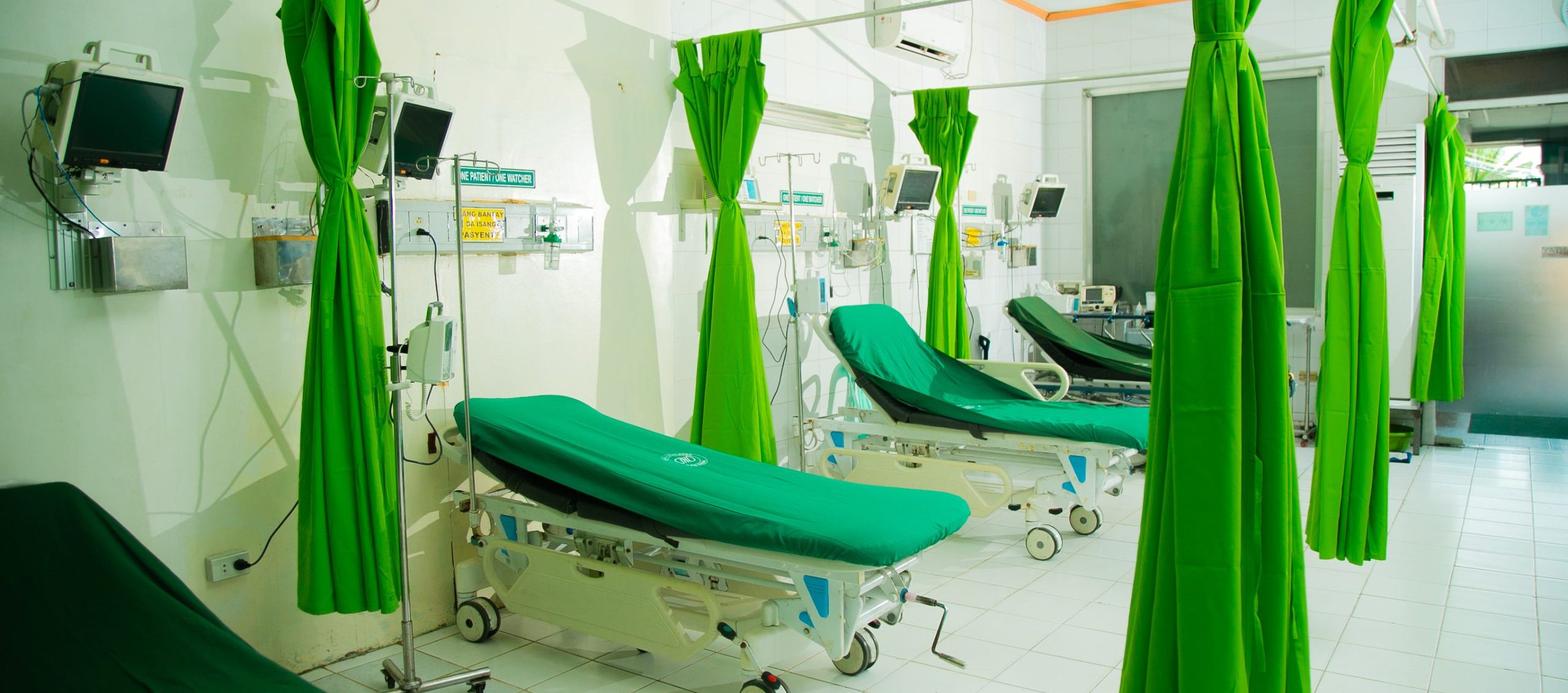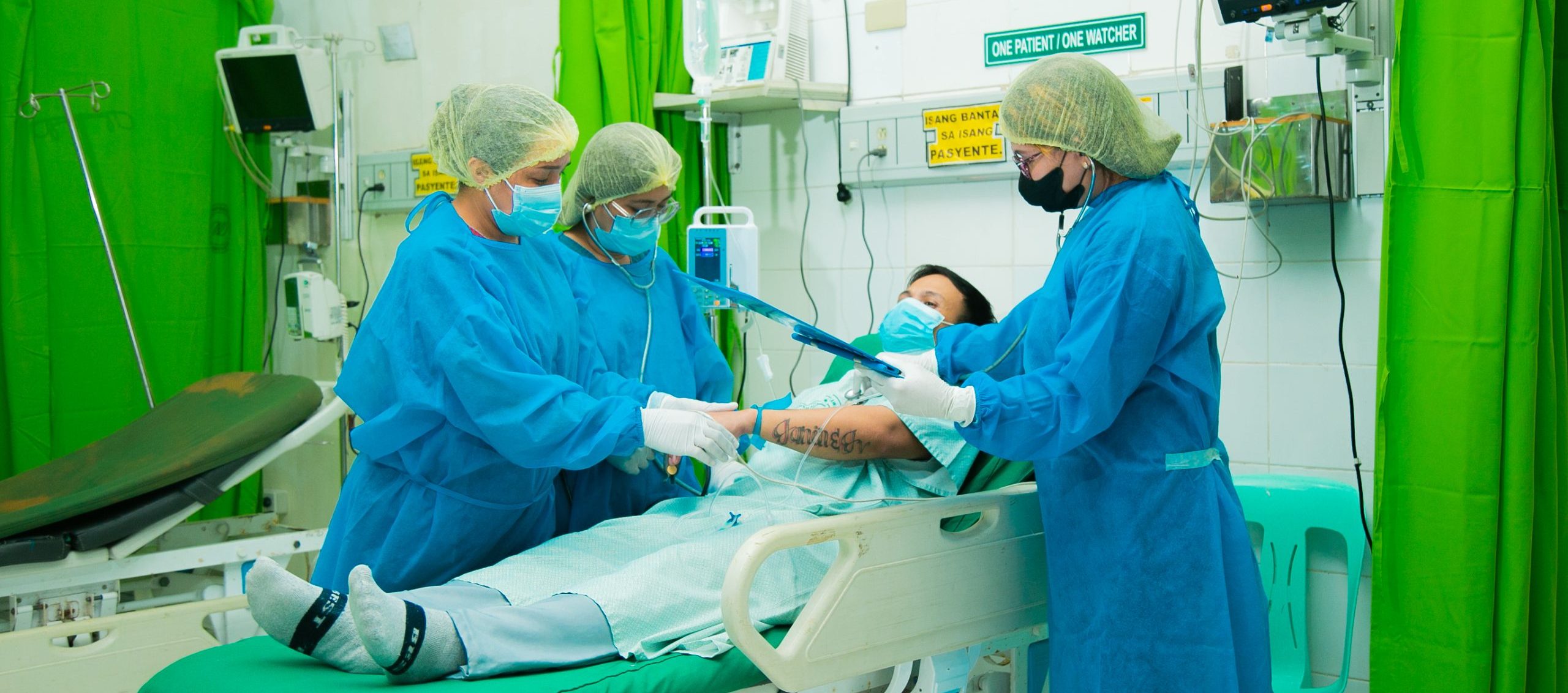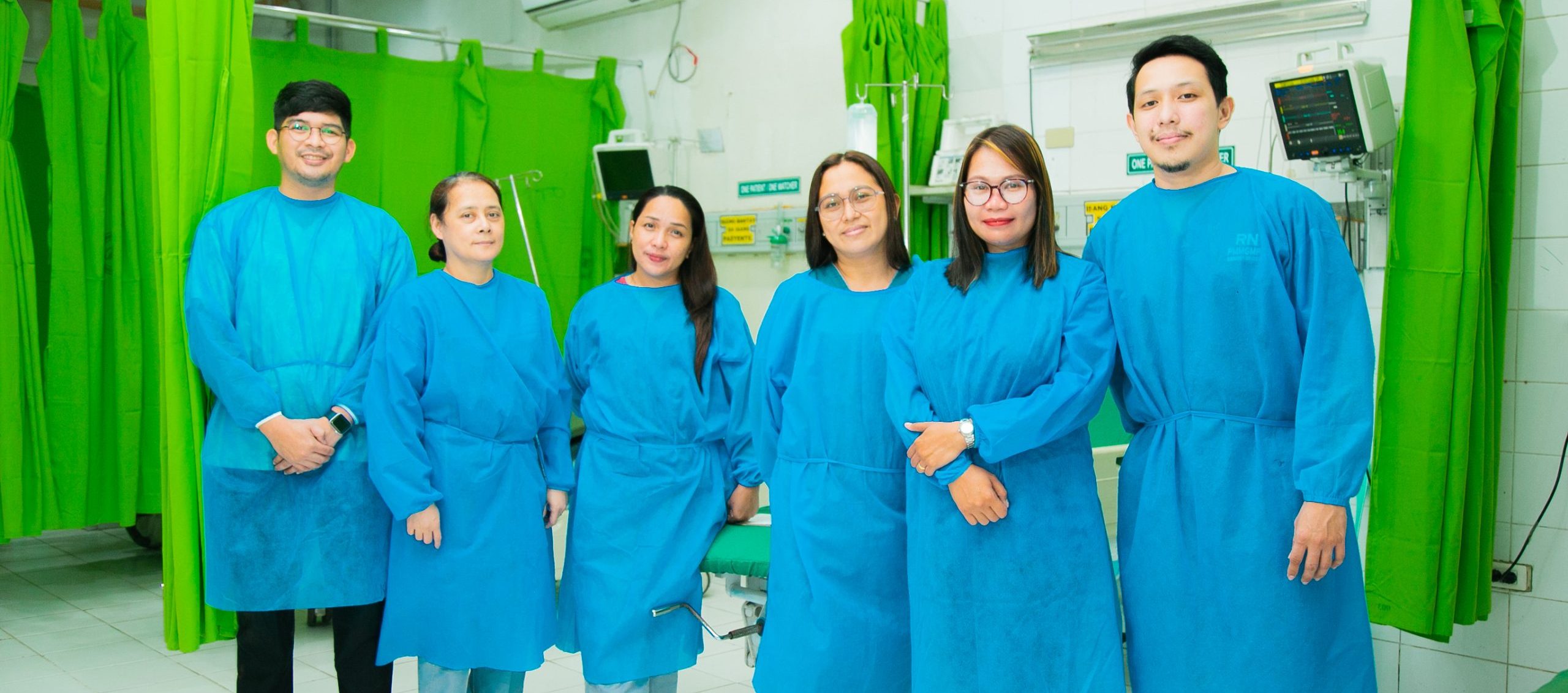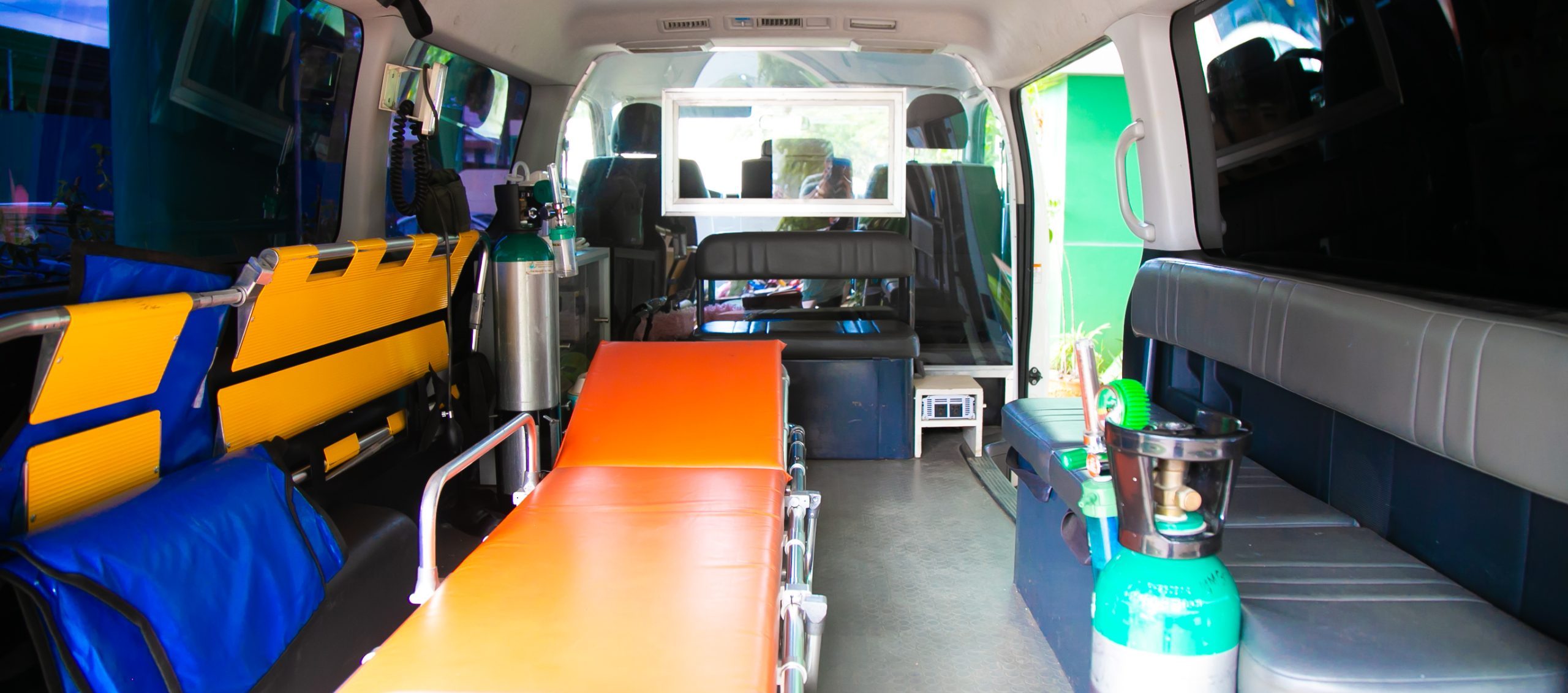The Emergency Service Unit consist of qualified, skilled, trained, and highly efficient medical health care staff such as doctors, nurses, and nursing attendants dedicated to provide and serve everyone with immediate high quality medical and surgical interventions to save life by utilizing quality equipment and supplies which are readily available in the unit.
MISSION:
Provide patient centered emergency care and intervention in timely manner to promote and preserve life, which is affordable, quality, and sustainable to all.
VISION:
Recognized as premiere provider of world class, excellent, and high-quality emergency care practice accessible to all.
SERVICES OFFERED:
1. Operates 24/7
2. Admittance, observation, and consultation
3. Complete physical assessment of each patient’s arriving at ER in need of medical intervention and diagnosis for their symptoms.
4. Provision of prompt lifesaving resuscitation and initial stabilization of patients.
5. Advocates patient’s rights through informed consent
6. Provides emergency and non-emergency surgical intervention and procedure.
7. Facilitates efficient, prompt, safe, and accurate turn-over of patient- be it admittance, discharge, or transfer to other department or units.
8. Serves as referral hospital for patients requiring further evaluation and management.
9. Facilitates referral to other hospital or institution when needed after initial management is provided and patient’s condition stabilizes.
10. Provides ambulance service
UPDATED EMERGENCY SERVICE UNIT PROCESS FLOW
STEP 1
REGISTRATION AT TRIAGE AREA
The Triage Staff will give you a form to fill out. This will also include a quick interview and assessment on your patient’s current health condition and symptoms.
*Priority will be given to critical patients
*If you are physically unable to register at the TRIAGE area, your companion is allowed to fill-out the form and be interviewed as your proxy.
STEP 2
VITAL SIGNS TAKING
You will be attended to by an available NOD or NA on Duty. Your body temperature, blood pressure, pulse rate, respiratory rate and oxygen saturation shall be taken and documented.
*Patient was placed in either the ER Triage Room, ER Observation Room or ER Isolation Room or if not available wheelchair / stretcher should be provided as needed.
STEP 3
ASSESSMENT AND INITIAL INTERVIEW
The available NOD or NA on Duty will assess and interview you about your medical concern / emergency and will further evaluate your medical needs. The NOD or NA on Duty that assessed you will endorse you to the available ROD on duty.
*Priority will be given to critical patients
STEP 4
INITIAL MANAGEMENT BY ER MD
You will be attended to by an available doctor for evaluation and medical assessment.
*Priority will be given to critical patients
STEP 5
LABORATORY / IMAGING
Depending on your doctor’s assessment, blood extraction and imaging might be necessary to diagnose your condition.
Please be guided on our Processing Time per Request.
- Blood Exam / Chemistry (1-2 hours)
- ECG (5-10mins)
- SARS-COV-2 Antigen Test (30 minutes)
- Urinalysis & Fecalysis (1 hour)
- RBS (1 hour)
- STAT RBS (2 minutes)
- Trop I / Cardiac Markers (1-2 hours)
- ABG (30 minutes)
- X-ray / CT-Scan (2 hours)
- Ultrasound (every morning only or if with scheduled Radiologist)
STEP 6
DISPOSITION / MEDICATION
Your doctor will have to decide whether you are for ER Observation or you are for Admission depending on his/her assessment or the results of your Laboratory / Imaging. As soon as your results are out, your doctor should explain the results to you. Should there be a need to admit you, your doctor will explain the reason and further recommendations.
ADMISSION to HOSPITAL (proceed to Steps 7-10)
DISCHARGE from ER (proceed to Step 11)
STEP 7
ADMISSION
If you are for Admission, the Admitting Officer will discuss and orient our hospital policies and rates depending on your admission needs. You will then have to sign our Consent for Admission form if you are amenable for Admission.
STEP 8
ROOM ASSIGNMENT
The Admitting officer will inform you about our available rooms and will update you from time to time on the status of your chosen room if in case there no available room at the moment.
Waiting time for room availability ranges from 1 hour to 6 hours depending on the room availability (especially intensive units).
STEP 9
ENDORSEMENT / CARRYING OUT OF APs ORDERS
Once you have room and signed our consent for Admission, please give your nurse time to carry out all necessary doctor’s order and endorse all the procedures needed, pending laboratory, medications and additional orders to your receiving unit for a seamless transfer from ER to your room.
STEP 10
TRANSFER TO NURSING UNIT
The NOD and IW will escort and bring you to your assigned room.
Before you transfer to your room, please share with us your experience and feedback on one of our provided survey boxes inside the ESU.
STEP 11
DISCHARGE and BILLING
Once cleared for discharge, the NOD or NA on duty will give you your final charge-slip that you will pay at our cashier.
Kindly double check your charge-slip before settling your bill. After paying at the cashier, kindly present your official receipt to our staff on duty. The doctor or NOD then give you your Discharge Instructions together with your Home Medications and copies of your Laboratories/Imaging.
ORGANIZATIONAL CHART
Unit Head: Adelito D. Posas, MD
Nursing Director: Mary Lourdes C. Vidallo, RN, MSN
ESU Supervisor: Reynald Nofuente, RN
ESU & Ambulance Nurse: Darwin E. Baluyut, RN
Senior Staff Nurse:
Meljoy S. Rodriguez, RN, EMT-B
Fenny G. Umpad, RN
Paul Christian I. Lamban, RN
Neva Jane T. Padilla, RN
Staff Nurse:
Kristea Joy D. Presado, RN
Rossini A. Ado, RN
Feona Kaye Ann M. Llave, RN
Shaina Mae T. Fernandez, RN
Nursing Assistant:
Ma. Cristina A. Meclon, RM
Irene B. Pascual, RM
Maricel A. Salazar, RM
Mary Ann O. Dulay, RM
Ana U. Garciano, RM
Margie A. Cananghan, RM
Marc Louis G. Murcia
Institutional Worker:
Benny B. Beup
Notes:
1. The unit uses the process of TRIAGE to sort patients according to the urgency of their need to care, a very important process to be aware of when going to ER.
2. Updated training in Basic Life Support (BLS) and Advanced Cardiac Life Support (ACLS)
3. Prepared and trained in handling infectious and/ or communicable diseases
4. With trained and licensed Emergency Medical Technician (EMT)
EQUIPMENTS AND MODALITIES:
• Cardiac monitor attached to wall of each bed
• Defibrillator
• Doppler
• ECG machine
• E-CART with complete supplies and medications
• Infusion pump attached to IV stand of each bed
• Infrared Operating light
• Isolation Room equipped with Personal Protective Equipment (PPE)
• Laryngoscope for adult and pediatric
• Ophthalmoscope
• Otoscope
• Portable mechanical ventilator
• Portable Pulse Oximeter
• Pharmaceutical Refrigerator
• Suction Machine
• Stryker bed
• Vital signs apparatus
• Weighing scale for neonate, pediatric, and adult




